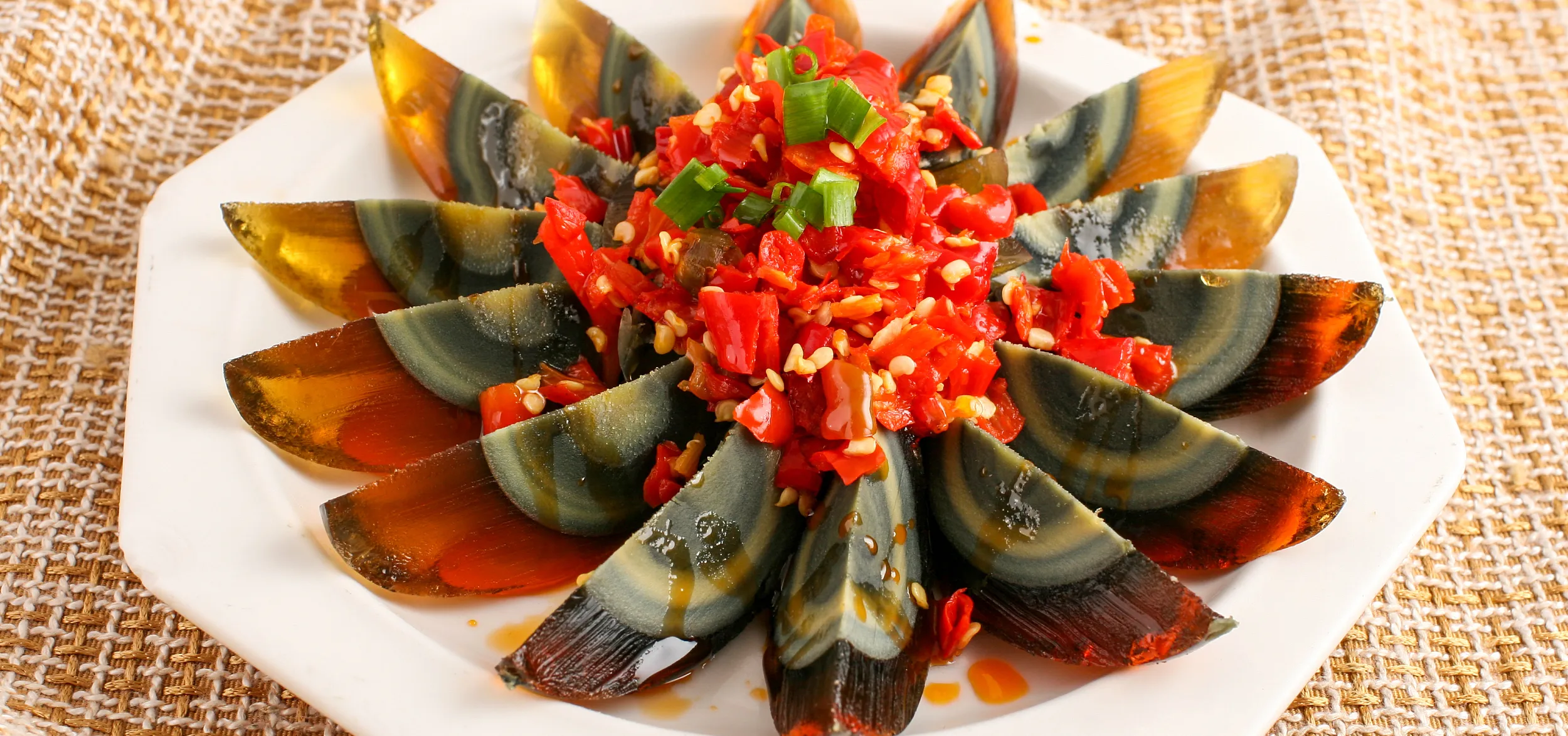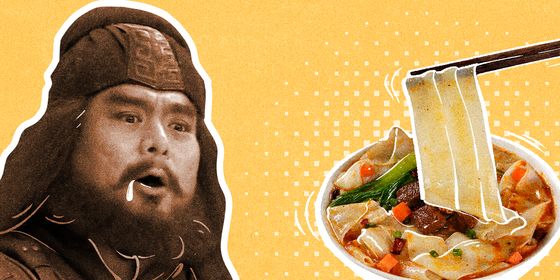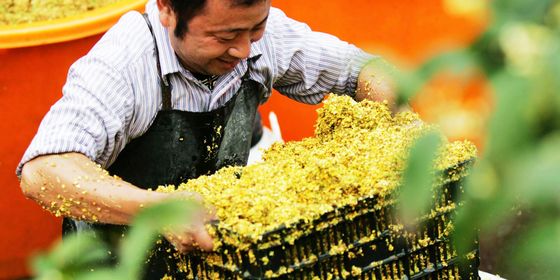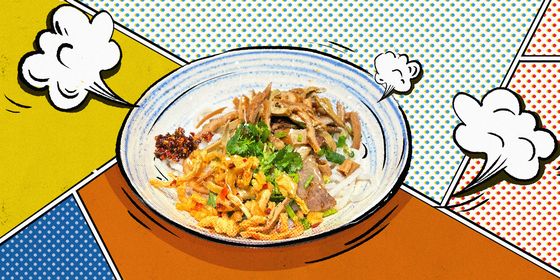A few “creative” ways that Chinese people cook eggs
If there is ever a competition for the most used ingredient in Chinese cooking, the egg ought to do quite well. You can soft-boil them, hard-boil them, steam them, pan-fry them, stir-fry them with any vegetable, make them into soup, scramble them, soufflé them…but you can also pack them in sawdust, dunk them in brine, barbecue them crisp, or simply pour boiling water over them.
Before you judge these “unorthodox” cooking methods or “weird” photos, here’s an introduction to a few of the more innovative ways Chinese people have been making and consuming egg—and why they keep going back for more.
Pine-patterned egg 松花蛋
Pine-patterned eggs are named after the patterns on the surface of the egg white, which is, um, not really white anymore. It goes by many other names: pidan (皮蛋), preserved egg, transformed egg, and ash-coated egg, as well as hundred-year egg, century-egg, thousand-year egg, and millennium-egg (you get the idea).
It’s made by preserving duck or chicken egg in a mixture of clay, ash, salt, and quicklime, coated in a protective layer of sawdust or rice hulls and left for 100 year…well, no, just a few weeks to a few months. Emerging from this cocoon is a delicacy of putrid-looking greenish-grey yolk and brown, transparent, jelly-like egg white. If that doesn’t send novice foodies running for the hills, the egg’s weird creamy texture and the peculiar salty/bitter flavor might.
Pine-patterned egg can be eaten without further preparation. Just slice into wedges and add some vinegar, and voilà, delicious cold appetizer to go with beer or baijiu. You can also mix the sliced egg with small tofu tubes, shredded ginger, and chopped spring onions.
China’s favorite zombie egg can also be found in pidan and lean pork congee (皮蛋瘦肉粥), usually served for breakfast or at Cantonese dim sum restaurants. The main ingredients, as its name tells, are the rice congee, sliced lean pork, and chopped pine-patterned eggs.
Salted duck egg 咸鸭蛋
Compared with pine-patterned egg, salted duck egg is much tamer. It is made by soaking duck eggs in brine, or packing each egg in damp, salted charcoal. If you make it at home, you need to hard-boil the egg before eating. In supermarkets, these eggs are usually sold cooked and vacuum packed. The salted duck eggs have a briny aroma, gelatinous egg white, and a golden, textured yolk. Most people say the yolk is the best part, especially when it starts leaking orange grease. Mmmmm.
The saltwater bath makes the egg white extremely salty and the yolk very oily and rich. To spare your taste buds, the egg is almost never eaten alone, but paired with congee and rice. There’s no agreement why you almost never see salted chicken egg, only duck egg, though it may simply be because duck eggs are bigger and fattier.
Tea Egg 茶叶蛋
The tea egg is a Chinese traditional snack food, often sold by vendors on the street or in convenience stores. To make a tea egg, you just need to hard-boil an egg, crack it, and boil it again in tea leaves, soy sauce, and various spices. A common seasoning combo for tea eggs is Chinese “five-spice powder,” which contains ground cinnamon, star anise, fennel seeds, cloves, and peppercorns. When a tea egg is peeled, you will find egg white turned to a light or dark brown color, veined with patterns mirroring the cracks on the shell. The taste varies depending on the type of tea and spices used, But generally, it is salty with a hint of tea flavor.
Egg-drop soup 蛋花汤
A staple for broke students everywhere, egg-drop soup (蛋花汤, literally “egg flower soup”) is easy to prepare. Simply beat eggs and pour them into boiling water or broth and stir, until wispy strands of egg begin to float in the soup, then add seasoning. Vegetables are often added to the soup, with tomato and seaweed being the most common.
But even these few minutes’ in the kitchen are too much work for you, someone on the internet has invented an even easier method: beat eggs in a bowl, pour boiling water on top, then add salt (or sugar if you like it sweet). Then cry at what your life has become.
Solid egg 实蛋
This can be found at some barbecue stands in northeastern China. Unlike egg-drop soup, this is not a delicacy you can make with one eye on your phone. First, you need to make a small hole on the eggshell and pour out the insides into a bowl—but be careful not to destroy the shell. Beat the egg with baking soda, then pour the beaten egg back in the shell. Steam the egg in the shell until it’s cooked.
Then, peeling off the shell, you will get a firm, non-transparent new egg. Cut this into thin slices. Finally, roast these egg slices until the surface becomes crisp. For flavoring, brush the surface with some chili sauce.












